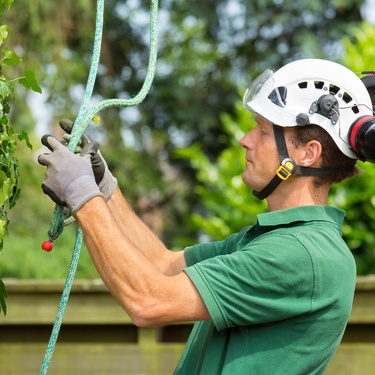
Working as an arborist has its fair share of challenges, but the risks of working at heights make safety the top priority. Tree care might look serene from the ground, but every step can pose unique dangers for those climbing and trimming. Whether you’re an experienced climber or a budding tree-care professional, knowing how to stay safe could be the difference between a successful day and a serious accident. Here are the top safety tips every arborist should know to remain secure while working above ground.
Use the Right Gear
When you’re working at height, your gear is your lifeline. A helmet designed for arborist work protects against falling branches and other unexpected debris, while harnesses and fall protection systems keep you anchored securely. Investing in high-quality equipment might seem steep, but there’s no compromising when it comes to safety tools. Treat your gear with respect because it has your back up in the trees.
Master Rope Techniques
Knowing how to handle ropes goes beyond simple knots. Proper climbing and rigging methods are non-negotiable when you’re operating in elevated environments. Rope management techniques reduce tangles and tripping hazards. Skilled arborists practice these regularly, making each ascent and descent smoother and safer.
Inspect Equipment Regularly
Never climb a tree without giving your tools and gear a once-over. Daily inspections of harnesses, carabiners, ropes, and other equipment can reveal wear and tear you might miss in a rush. Even small frays or cracks could compromise your safety. Spending a few minutes checking your equipment before each climb keeps accidents at bay.
Pay Attention To Weather
Weather conditions can change the safety game in a heartbeat. High winds, storms, and even subtle rain can make branches slippery and trees less stable. Arborists have to stay proactive by checking the forecast, keeping an eye on sudden changes, and knowing when it’s better to climb down and reschedule for safer conditions.
Plan for Emergencies
Even if you’ve followed every rule in the book, accidents can still happen. That’s why emergency response planning matters as much as having the right tools. Workers need to know how to respond if someone gets stuck, injured, or involved in a fall. Rehearse evacuation drills with your team so that quick thinking becomes second nature.
Always Train and Stay Certified
No one becomes a safety expert overnight. Training courses and certifications go beyond good practices by teaching arborists advanced skills and providing updates on the latest techniques. Professionals who invest in consistent learning improve their craft and increase their chances of staying safe at higher elevations.
Keep Communication Clear
Working in a tree is no place for guesswork. Clear communication between team members keeps everyone aligned and aware of potential hazards. Reliable communication devices like headsets can bridge gaps, especially when the noise from chainsaws and other equipment interferes. Talk openly about tasks both before and during work to minimize surprises.
Assess Every Job Site First
Every tree, yard, and property comes with its own set of unique hazards. Before grabbing your gear, assess the job site thoroughly. Look for risks like power lines, unstable soil, structural damage to trees, or wildlife. Identifying these before climbing gives you the information you need to plan a safe approach.
Arborists know their work is both rewarding and dangerous, so following the above safety tips must always remain a priority. All the little details add up, whether it’s the rope holding you steady, the gear protecting you, or the communication keeping your team aligned. Master these habits, stay vigilant, and climb confidently every day.
Bio: Casey is a passionate copyeditor highly motivated to provide compelling SEO content in the digital marketing space. Her expertise includes a vast range of industries from highly technical, consumer, and lifestyle-based, with an emphasis on attention to detail and readability.




















